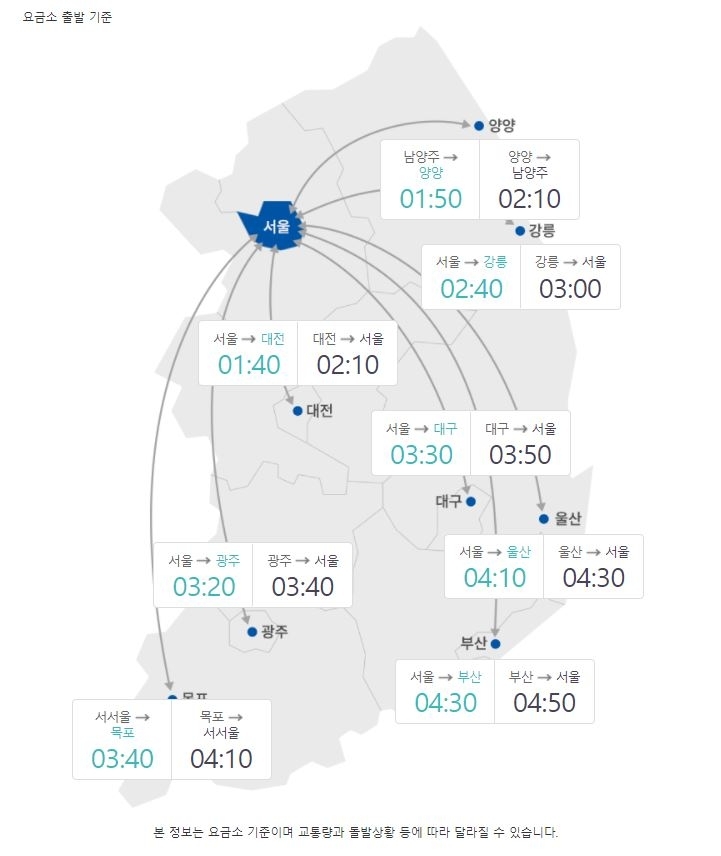
On the afternoon of the 12th, New Year’s Day, traffic is generally smooth across the national highway. However, congestion is occurring in some sections centering on the’Gwigyeong direction’ to Seoul.
According to the Korea Expressway Corporation, as of 4:30 p.m. on the same day, cars on the Gyeongbu Expressway are in a total of 33 km, including 17 km from Bukcheonan to Ansong Station, and 16 km from Mokcheon to 5 km from the Cheonan service station. I am repeating the stand.
On the West Coast Expressway, cars are running slowly in a 40km section, such as Dangjin in the Seoul direction-22km near the Seohae Bridge, and only 6km in the Mokpo direction, such as Seopyeongtaek ~ 4km near the Seohae Bridge.
The first circular highway in the metropolitan area (formerly known as the Seoul Outer Ring Expressway) is 23km in the vicinity of the Suraksan Tunnel to 10km in Songchu in the direction of Guri, and 8km in the direction of Guri to Sangil in Ilsan.
On the Jungbu Expressway, cars are not able to achieve their speed in the 14km section, such as Nami Junction in the Hanam direction and 9km in the vicinity of Seocheongju, and 7km in the Nami direction, such as Jincheon-Jincheon Tunnel.
In addition, cars are moving slowly on the Yeongdong Expressway 20km to Incheon and 12km to Gangneung.
On the 12th, the Korea Expressway Corporation forecasts that the nation’s traffic volume will be 4.29 million, and 390,000 vehicles will move from the metropolitan area to the local area and 380,000 vehicles will move from the local to the metropolitan area. The Korea Highway Corporation predicted that the congestion of’going home’ from Seoul to other areas will be resolved at 7-8 pm, and the congestion of’Gwigyeong direction’ from other areas to Seoul will be resolved by 10-11 pm.
If you depart from the toll booths in each city at 5 PM, the time to Seoul is expected to be 4 hours and 50 minutes in Busan, 3 hours 40 minutes in Gwangju, 3 hours 50 minutes in Daegu, and 3 hours in Gangneung.
(yunhap news)
